In Windows Vista, Microsoft changed the way you shut down Windows. They made the classic Shutdown Windows dialog less prominent. Instead, they implemented a dropdown menu for the shutdown button in the Start menu. Although Windows 10 comes with a lot of ways to shutdown your PC, the classic shutdown dialog is accessible only with the help of a hotkey. You have to minimize all windows, then click to focus on the Desktop and finally press Alt+F4 to make it appear. Today, I am going to share how to create a shortcut to the Shut Down Windows dialog in Windows 10.
Advertisеment
All we need is just the Notepad application.
How to Create a Shut Down Windows Dialog Shortcut in Windows 10
Step 1: Start Notepad and paste the following text:
dim objShell
set objShell = CreateObject("shell.application")
objshell.ShutdownWindows
set objShell = nothingStep 2: Select File - Save menu item and type any filename, but it is necessary to add ".vbs" as the file extension.
Tip: You can add the filename and extension inside quotes, so that Notepad does not add ".txt" to the filename that you have typed. Adding it inside quotes will save it as "shutdown.vbs" and not, "shutdown.vbs.txt". See the following image: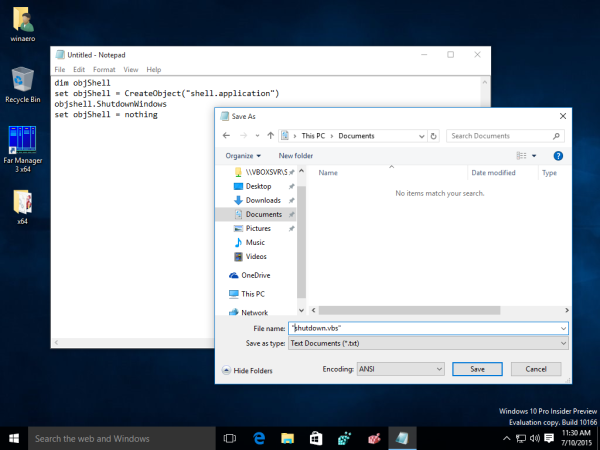
Step 3: Double-click on the file you saved and you will see the good old Shut Down Windows dialog.
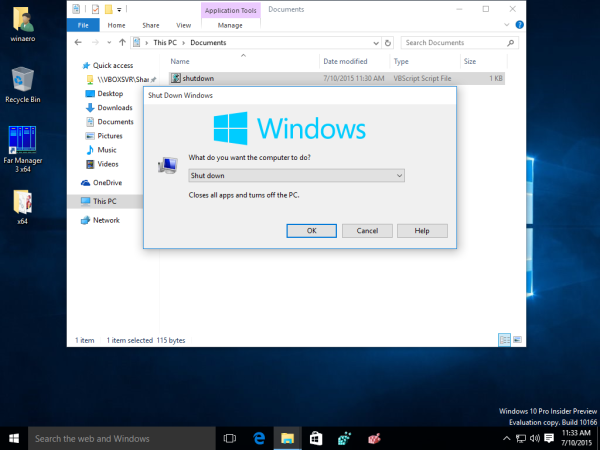
That's it.
How it works
There is nothing special about this trick. Windows provides users with access to a wide variety of objects necessary for running applications and managing the operating system. One of them is the Shell COM object which we have created inside the script. It has a Shutdown method which displays the Shut Down Windows dialog box.
Bonus tip: How to pin our Shut Down dialog script to the Taskbar
It is very easy to get it pinned with our latest software: Taskbar Pinner. Just follow the step-by step instructions below:
- Create a shortcut to your VBS file and place it anywhere you want.
- Change the icon of the shortcut you have created to the one from C:\Windows\System32\Shell32.dll file.
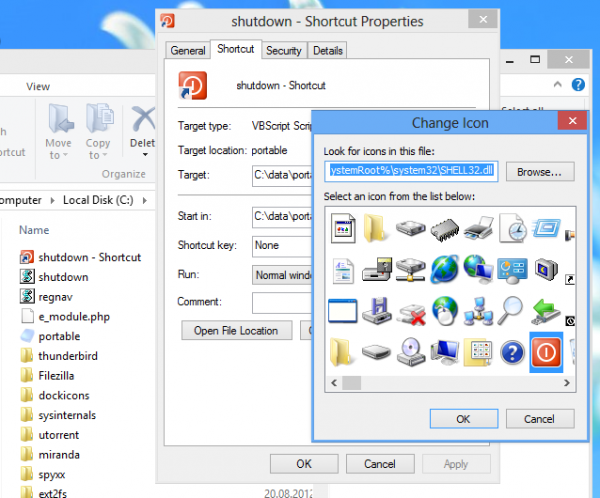
- Drag the shortcut file to Taskbar Pinner's main window and drop it. That's all.
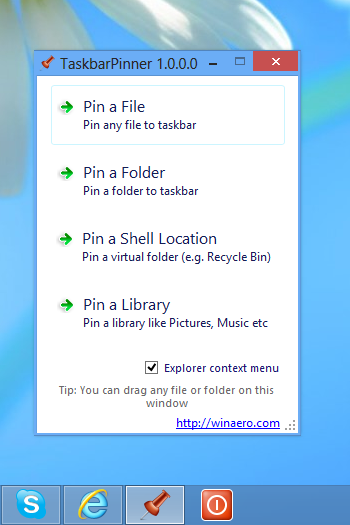
Now you can even safely remove the shortcut you created in step 1. It is not required any more.
Download ready-to-use VBScript file
To save your time, you can use Winaero Tweaker. The app allows creating the shortcut with one click.
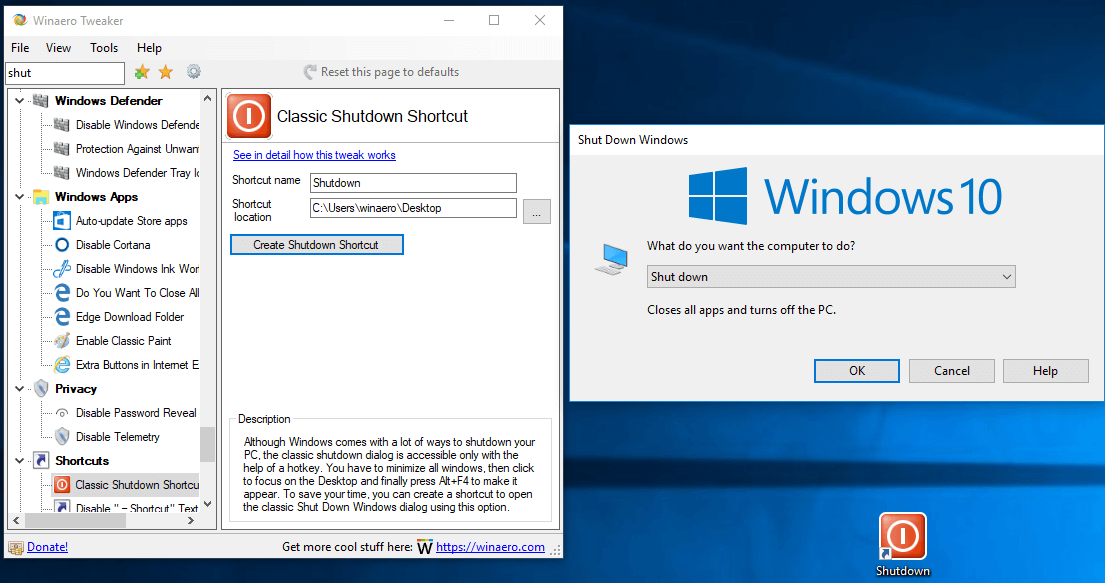
You can download the app here: Download Winaero Tweaker.
Support us
Winaero greatly relies on your support. You can help the site keep bringing you interesting and useful content and software by using these options:

Here’s another way of creating a Shutdown Shortcut
1. Right click on a blank area of your Desktop.
2. Select New.
3. Choose Shortcut.
4. Type in a name e.g. “Shutdown”.
5. Press the Enter key
6. Select Finish.
7. The Shortcut appears on your Desktop.
8. Right click on it and select Properties.
9. In the Properties window, in the Target section you will see –
1. “C:\Windows\System 32\shutdown.exe”
10. Leaving a space after “shutdown.exe” type “/p”.
11. Select Ok.
Now to create an icon
1. Right click on your Shutdown shortcut and select Properties.
2. Select Change Icon.
3. A Warning Box opens select Ok.
4. In the Change Icon box, choose a suitable icon.
But it will not show you any prompt/dialog.
I use Windows 10 and it will not let me change the icon!